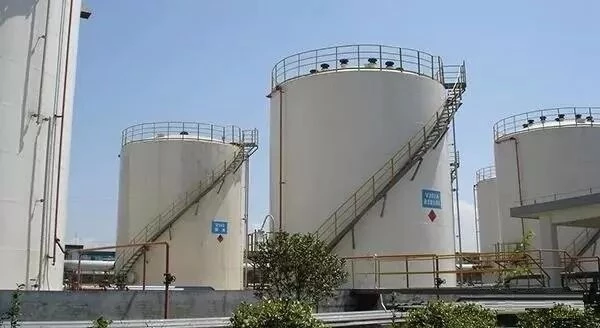Safeguarding Oil Storage Tanks: Strategies Against Corrosion Risks
The storage of oil products poses a critical concern in the ever-evolving petroleum industry. Among the prominent challenges faced by this sector, the corrosion of oil storage tanks stands out as a complex issue with multifaceted causes. This article delves into the various aspects of this challenge and explores effective strategies for addressing and mitigating corrosion risks in oil storage tanks.

Understanding the Corrosion Dynamics
The corrosion of oil storage tanks involves intricate interactions between stored oil and corrosive elements such as hydrogen, sulfur compounds, organic and inorganic salts, and moisture. Environmental factors further contribute to the degradation of the tank's exterior, collectively impacting the overall lifespan of these crucial storage units.
Consequences of Corrosion Neglect
Inadequate anti-corrosion treatment has far-reaching consequences, ranging from equipment damage and storage tank leakage to broader implications for the safe production of oil depots and the quality of stored oil. This section explores the types of corrosion, including corrosion of the tank wall, bottom plate, and top plate, with a focus on the varying degrees based on underlying causes.
Crafting an Effective Anti-Corrosion Strategy
To combat corrosion effectively, careful consideration is essential in selecting coatings, particularly for the outer wall of storage tanks. This segment discusses a strategic anti-corrosion approach, involving the choice of a primer with robust rust-resistant properties, a medium coating with excellent shielding capabilities, and a topcoat with superior light and color retention, resilience to environmental conditions, and easy maintainability through overcoating.
Environmental Factors and Corrosion Severity
The exposed outer wall of oil tanks faces specific challenges from atmospheric corrosion due to rain, snow, frost, fog, and humid air. This part examines the severity of corrosion based on the specific environment, including factors such as outdoor sunlight, proximity to the seaside, or location in an oil refinery with exposure to chemical gases that can intensify corrosion.
Enhancing Weather Resistance with Additives
Ensuring the weather resistance of paint coatings involves incorporating anti-aging additives. This section explores how these additives enhance anti-aging performance, chemical corrosion resistance, and the ability to withstand harsh weather conditions.
Key Attributes of an Ideal Coating
A deep dive into the essential attributes of an ideal coating includes excellent gloss retention, color retention, resistance to powdering and yellowing, outstanding oil and solvent resistance, and good coatability. The discussion extends to providing robust protection to acrylic resin, polyurethane, and other coating resins, as well as various pigments.
In navigating the complexities of oil storage tank corrosion, a comprehensive and strategic approach is indispensable for maintaining equipment integrity, preventing leaks, and safeguarding the overall operational efficiency of oil depots. This article concludes with a summary of key takeaways and the importance of a proactive stance in tackling corrosion challenges.

Understanding the Corrosion Dynamics
The corrosion of oil storage tanks involves intricate interactions between stored oil and corrosive elements such as hydrogen, sulfur compounds, organic and inorganic salts, and moisture. Environmental factors further contribute to the degradation of the tank's exterior, collectively impacting the overall lifespan of these crucial storage units.
Consequences of Corrosion Neglect
Inadequate anti-corrosion treatment has far-reaching consequences, ranging from equipment damage and storage tank leakage to broader implications for the safe production of oil depots and the quality of stored oil. This section explores the types of corrosion, including corrosion of the tank wall, bottom plate, and top plate, with a focus on the varying degrees based on underlying causes.
Crafting an Effective Anti-Corrosion Strategy
To combat corrosion effectively, careful consideration is essential in selecting coatings, particularly for the outer wall of storage tanks. This segment discusses a strategic anti-corrosion approach, involving the choice of a primer with robust rust-resistant properties, a medium coating with excellent shielding capabilities, and a topcoat with superior light and color retention, resilience to environmental conditions, and easy maintainability through overcoating.
Environmental Factors and Corrosion Severity
The exposed outer wall of oil tanks faces specific challenges from atmospheric corrosion due to rain, snow, frost, fog, and humid air. This part examines the severity of corrosion based on the specific environment, including factors such as outdoor sunlight, proximity to the seaside, or location in an oil refinery with exposure to chemical gases that can intensify corrosion.
Enhancing Weather Resistance with Additives
Ensuring the weather resistance of paint coatings involves incorporating anti-aging additives. This section explores how these additives enhance anti-aging performance, chemical corrosion resistance, and the ability to withstand harsh weather conditions.
Key Attributes of an Ideal Coating
A deep dive into the essential attributes of an ideal coating includes excellent gloss retention, color retention, resistance to powdering and yellowing, outstanding oil and solvent resistance, and good coatability. The discussion extends to providing robust protection to acrylic resin, polyurethane, and other coating resins, as well as various pigments.
In navigating the complexities of oil storage tank corrosion, a comprehensive and strategic approach is indispensable for maintaining equipment integrity, preventing leaks, and safeguarding the overall operational efficiency of oil depots. This article concludes with a summary of key takeaways and the importance of a proactive stance in tackling corrosion challenges.

